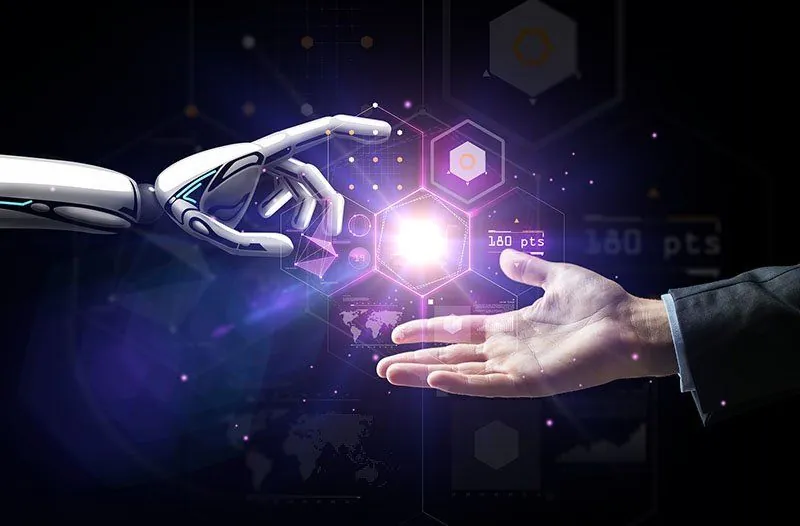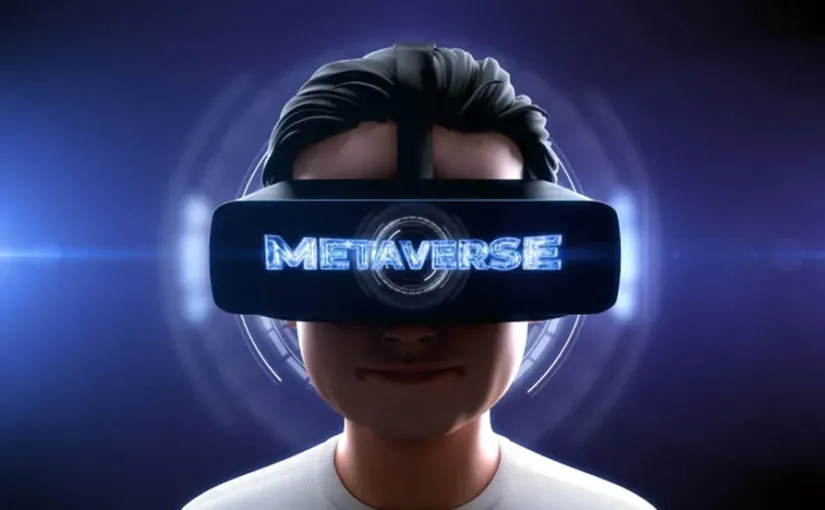Let’s face it, AI is no longer something of the distant future, or even the near future, it’s in the present.
Gartner, forecasts that AI bots will be powering 85% of customer service interactions by 2020, and that 20% of business content will by this time be written by AI.
This AI dominance may seem hard to believe, since the high-street isn’t exactly over-run with robots.
Even so, AI is still firmly entrenched in our lives.
It’s just disembodied in the form of millions of computer algorithms.
In fact, AI is ingrained into many aspects of every day life.
When you open a chat box on a website to have a conversation with a customer service rep, odds are you are now chatting with an AI bot.
Many companies employ AI within their chat communications to ensure more efficient and more personalized service
The Amazon warehouse that dispatches your goods is likely to be partly staffed by AI and bots too.
AI-driven Personal assistants like Alexa or Siri will soon be the norm with about a third of execs depending on them.
AI is all pervasive, which begs the obvious question as to what role role will artificial intelligence play in the L&D arena.
There are several game-changing ways that AI can make an impact in the learning arena.
Grading and Marking
It may be welcome news in the L&D profession that AI has the potential to start grading and marking tests and homework.
AI-based grading bots could relieve trainers and teachers of what for many is an occupational burden. Yes, your eLearning platform and integrated AI could be doing all of the work for you!
While it will be some time before AI can fully replicate human grading, it, is possible, as of today for grading to be automated in the areas of multiple choice and fill-in-the-blank testing, and we can therefore expect this type of AI grading to expand it’s reach.
Essay Grading software is making it’s way into the market place, but it is still in it’s early stages, but this will improve in quality over the coming years.
When essay grading software reaches full maturity, the teacher/trainer role will change as educators are freed from grading duties and can focus on more qualitative work like student interaction, in-class activities, and personal development.
AI-Based Digital Tutors
Back in 2010, the US Navy ran a pilot project where they developed a ‘Digital Tutor’ that mimicked the expert novice relationship and guided them to become IT system administrators.
It worked and they found that recruits who used the digital tutor regularly outperformed Navy experts with 7-10 year’s experience in both written tests of knowledge and real-world problem solving.
Don’t forget, this happened nearly a decade ago, so just think what could be achieved now.
It’s clear that AI Based digital tutors could have a big role to play, particularly in the technical disciplines, in helping students to learn.
Digital tutors could soon become part of elearning and m-learning programmes and could facilitate distance learning.

Teachers could delegate some of the syllabus to digital tutors, creating more flexibility and independence around learning.
Personalised Tests, Quizzes and Assessments
Test, Quizzes and Assessments are becoming an important part of elearning courses.
They help consolidate learning and measure the effectiveness of the learning course.
However, one limitation of these assessments is they are a one-sized-fit-all approach.
The tests are developed along the line-of-best-fit to ensure that the tests are suitable for all learners whatever their capability.
This means that some learners may find such tests to easy and others may find them too hard.
AI can, and in the very near future, will circumvent this problem by designing adaptive assessments and tests that go beyond the static Q&A format.
In-built AI will have the ability to assess individual ability, progression and needs tailor the tests and subsequent course content to suit the individual learner needs.
AI intervention here should lead to an increase in learner engagement and satisfaction.
Style-Centred Learning
We all know that each person has a preferred learning style and organisations spend a lot of time assessing learning styles and developing courses that suit, and many do not.
Irrespective of whether preferred learning styles are a key imperative for your organisation, or if they fall below the radar, AI has a future role to play in facilitating style-centred learning.
An AI-centred adaptive learning programme would be able to modify each training course to suit the student’s learning on the go.
For example, an intelligent LMS, detecting that the student had a visual learning bias could convert a section of written coursework into visuals.
Alternatively, a student who likes to read information might have an audio section of the course converted into a text format for easy reading.
AI can create a safe environment for trial and error learning
Trial and error is an important form of learning that has been responsible for many of humankind’s greatest achievements.
This style of learning favours the brave and many learners are too apprehensive to experiment and make a mistake in front of their peers or teachers/trainers in a class-room format.
AI can make intimidation-free trial and error learning available to the masses, by creating judgement free learning environments run by a non-judgemental AI.
In this environment, students have the opportunity to experiment, speculate, make suggestions, try out new approaches without fear of criticism, comment or public disapproval.
AI will in the future be the perfect format for intimidation-free trial and error learning, achieving something that a face-to-face or social learning environment cannot.
Creating Digital Content
Researching and finding source material and producing learning content is a time consuming area of the L&D process.
For many however, course design it is a creative and enjoyable process and so not everyone will welcome the fact that AI systems can be developed to do this task.
But, it’s true, AI systems can locate and extract appropriate information and convert this into a human readable format suitable for learning.
You may have seen the most crude version of this on YouTube in the form of the computer-generated news stories with video, pictures and spoken script which are literally cobbled together by AI tools such as Wibbits, using data that is strewn across the web.
This technology will of course improve and it will be applicable to L&D.
Currently, these AI-driven authoring tools created by Content Technologies can create content using information from relevant articles and books.
In practice, this system can scour the web, or whatever learning resources it is provided with and create learning course material, ready to be used by an instructor/teacher in a class-room setting.
It means that AI can do a lot of the ‘heavy-lifting’ element of the course design process leaving instructional designers more time to focus on delivery and producing engaging content.

Accessibility
Perhaps one of the most socially responsible areas that the AI can impact learning is accessibility.
While educators do their best to make learning accessible to people with disabilities, learning has on the whole been designed for the fully able-bodied.
AI has the ability to bridge this accessibility gap by making learning available to more and more students irrespective of any disabilities they may have.
For example, Microsoft’s Seeing AI app, gives us a glimpse of what is to come.
This app enables the partially sighted to use their phone as a third eye, which can give visual descriptions of anything the camera is pointed at, be that a friend, (whose picture is saved in the camera), the emotional state of people, a sign etc…
With this kind of AI augmentation, learning developers will eventually be able to design courses that are more broadly accessible.
This is a near, not distant future app, because we have seen rapid progress in this field already, with Google for example, already having deployed AI enhanced accessibility on YouTube, which is becoming one of the biggest free online learning libraries on the web.
Memory Upgrade
We have saved the best for last! Now, one of the biggest challenges facing learners and trainers is knowledge retention, the basis of learning.
Now, bleeding edge technologists are not offering the prospect of an AI that can boost human memory.
Sounds like something from the matrix.
Well, researchers from the University of Pennsylvania machine learning algorithms are able to decode and enhance human memory, by triggering strategically timed pulses of electricity to the brain, when a person is perceiving something, to enhance the memory of that event.
It’s in it’s early stages but in the future we could see some form of learners wearing some kind of AI-driven cranial stimulation device designed to enhance information recall.
Does that sound scary or exciting?
Perhaps a bit of both?
Finally, AI has a huge role to play on the future of learning and development.
In some of the more menial areas of education, it will replace the function of the traditional educator.
However, it can also be used to augment, enhance and enrich the educators role, by freeing them from repetitive work, giving them more time to focus on design, motivation, inspiration and one to one activity.
It’s not certain exactly how and when AI will impact learning, but what we do know is the effects will be profound and awe-inspiring when they reach their full-potential.
As an eLearning company, Skillshub is committed to creating efficient and impactful learning experiences. Contact us to find out more.


 Let’s face it, AI is no longer something of the distant future, or even the near future, it’s in the present.
Let’s face it, AI is no longer something of the distant future, or even the near future, it’s in the present.










